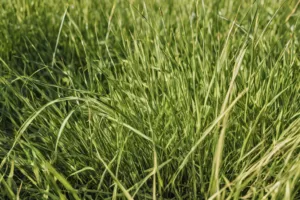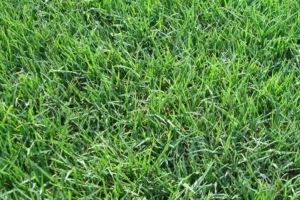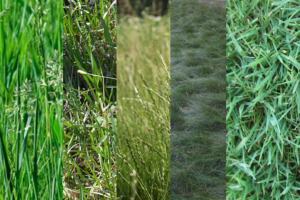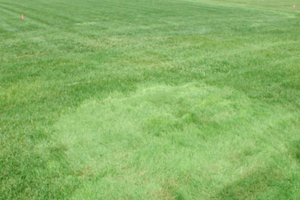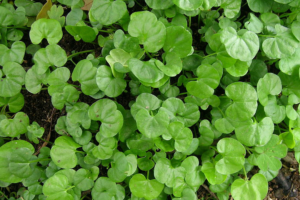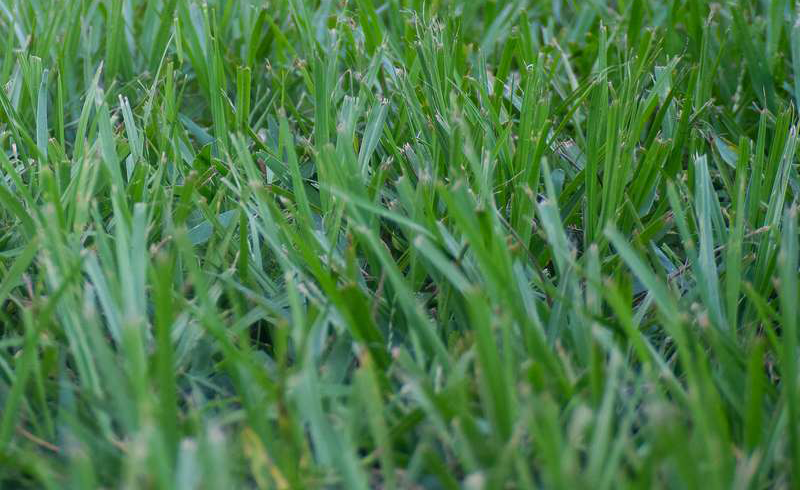
Introduction
Welcome to our comprehensive guide on Bahia Grass, a versatile and resilient grass species that has found its place in lawns, pastures, and landscapes worldwide.
Bahia Grass, scientifically known as Paspalum notatum, is a tropical to subtropical perennial grass known for its ability to thrive in various conditions. From its humble origins in South America, it has spread across the globe, becoming a staple in many landscapes due to its hardiness and minimal maintenance requirements.
In this guide, we will delve into the world of Bahia Grass, exploring its history, characteristics, benefits, and uses. We will also provide practical advice on how to grow and care for Bahia Grass and tackle some of its common problems. Whether you’re a homeowner looking to beautify your lawn, a farmer seeking a reliable forage option, or a nature enthusiast interested in learning more about different grass species, this guide is for you.
So, let’s embark on this green journey and discover why Bahia Grass has become a popular choice in landscaping and agriculture.
History and Origin of Bahia Grass
Where Bahia Grass Originally Comes From
Bahia Grass, as its name suggests, originates from Brazil, specifically the Bahia region, hence its name. This tropical to subtropical grass species has been a part of the South American landscape for centuries, thriving in the region’s diverse climates and soils. Bahia Grass developed notable resilience and adaptability in these conditions, making it a popular choice for lawns and pastures worldwide.
The journey of Bahia Grass from a regional grass species to a global landscaping and agricultural staple is a fascinating story of botanical exploration and innovation. The grass’s inherent qualities, such as its resistance to pests and diseases, drought tolerance, and low nutritional requirements, caught the attention of botanists and farmers who saw its potential for broader use.
How It Spread to Different Parts of the World
The spread of Bahia Grass beyond South America began in the early 20th century. It was introduced to the United States in 1914 as a potential forage crop due to its high yield and resistance to common pests and diseases. The grass adapted well to the southern states’ warm climates, particularly Florida, where it quickly became a preferred pasture choice.
The success of Bahia Grass in the United States sparked interest in other regions with similar climates. Over the decades, it was introduced to various parts of the world, including Australia, Africa, and Asia. In each of these regions, Bahia Grass proved its worth as a reliable and hardy grass species, capable of thriving in various conditions and providing valuable forage for livestock.
Today, Bahia Grass is a globally recognized grass species, appreciated for its versatility and resilience. Its journey from the Bahia region of Brazil to lawns and pastures worldwide is a testament to its adaptability and the potential of botanical species to find their niche in new environments.
Characteristics of Bahia Grass
Description of Its Physical Characteristics
Bahia Grass is a perennial grass species that stands out due to its unique physical characteristics. It has a deep root system extending up to 8 feet into the soil, providing the grass with a high degree of drought tolerance. This root system also helps the grass absorb nutrients efficiently, allowing it to thrive in soils where other grass species might struggle.
The grass blades of Bahia Grass are flat and range from bright green to a darker green color, depending on the specific variety and the environmental conditions. The blades are typically about 1/2 to 3/4 inch wide and can grow up to 12 to 24 inches tall if left uncut. One of the most distinctive features of Bahia Grass is its seed head, which has a characteristic “Y” or “V” shape, often described as looking like a bird’s foot.
Growth Habits and Life Cycle
Bahia Grass is a warm-season grass, which means it grows most actively during the late spring, summer, and early fall when temperatures are high. It produces its characteristic seed heads during this period and can spread rapidly if left unchecked. As temperatures drop in the fall and winter, Bahia Grass growth slows down, and the grass may turn brown, but it will green up again once warm temperatures return.
The deep root system of Bahia Grass provides drought resistance and supports the grass’s growth habits. The grass spreads through its seeds and extensive root system, producing rhizomes. These rhizomes can sprout new grass plants, allowing Bahia Grass to form a dense turf over time. This growth habit makes Bahia Grass an excellent choice for erosion control.
Types of Bahia Grass
There are several types of Bahia Grass, each with its characteristics and preferred growing conditions. The most common types include ‘Argentine,’ ‘Pensacola,’ ‘Tifton 9’, and ‘Paraguay.’
‘Argentine’ Bahia Grass is known for its dark green color and broad leaves, making it a popular lawn choice. On the other hand, ‘Pensacola’ Bahia Grass is more tolerant of cold temperatures and is often used in pastures in the southern United States. ‘Tifton 9’ is a relatively new variety praised for its high yield and resistance to common Bahia Grass pests. ‘Paraguay’ Bahia Grass is a tropical variety thriving in hot, humid conditions.
Each of these Bahia Grass types has its own strengths and ideal uses, but all share the core characteristics that make Bahia Grass such a versatile and resilient grass species.
Benefits and Uses of Bahia Grass
Use in Lawns and Landscapes
Bahia Grass has become a popular choice for lawns and landscapes, particularly in regions with warm climates. Its deep root system and drought tolerance make it an excellent choice for areas where water conservation is a priority. Additionally, its ability to thrive in various soil types, including sandy and acidic soils, makes it a versatile option for different landscapes.
In lawns, Bahia Grass forms a dense, carpet-like turf that is visually appealing and durable. It can withstand heavy foot traffic, making it an excellent choice for family yards, public parks, and other high-traffic areas. Its low maintenance requirements – it needs less mowing, watering, and fertilizing compared to many other grass species – further add to its appeal for homeowners and landscapers.
Use in Pastures and Forage
Beyond its landscaping uses, Bahia Grass is highly valued in agriculture, particularly as a pasture and forage grass. Its high yield and nutritional value make it an excellent food source for livestock, including cattle, horses, and sheep. The grass’s ability to regrow quickly after grazing makes it a sustainable choice for pastures.
Farmers appreciate Bahia Grass for more than just its forage value. Its deep root system helps prevent soil erosion, a common challenge in pastures. Additionally, its resistance to common pests and diseases reduces the need for chemical treatments, contributing to a healthier and more natural grazing environment for livestock.
Environmental Benefits
The benefits of Bahia Grass extend beyond its practical uses in lawns and pastures. This grass species also offers several environmental benefits. Its deep root system helps improve soil structure by reducing erosion and increasing the soil’s water-holding capacity. This benefits not only the grass itself but also other plants growing nearby and the local ecosystem.
Furthermore, like all plants, Bahia Grass absorbs carbon dioxide from the atmosphere, contributing to efforts to mitigate climate change. Its hardiness and low maintenance requirements also mean it typically requires less water and chemical treatments than many other grass species, reducing its environmental impact. These environmental benefits make Bahia Grass an eco-friendly choice for landscaping and agricultural uses.
How to Grow Bahia Grass
Ideal Soil and Climate Conditions
Bahia Grass thrives in warm climates, making it an excellent choice for regions with hot summers and mild winters. It can tolerate temperatures up to 100°F (38°C), and while it can survive in cooler climates, its growth may slow or go dormant during colder months.
When it comes to soil, Bahia Grass is quite adaptable. It can grow in various soil types, including sandy, loamy, and clay. However, it prefers well-drained soils and can need help in areas with poor drainage or frequent flooding. The ideal soil pH for Bahia Grass is between 5.5 and 6.5, but it can tolerate more acidic conditions.
Steps to Planting Bahia Grass
Planting Bahia Grass can be done through seeds or sod. If you’re starting from seeds, the best time to plant is during the warm season when soil temperatures are between 65°F (18°C) and 70°F (21°C). Before planting, prepare the soil by removing any existing vegetation and loosening the top layer of soil. Spread the seeds evenly over the area and lightly rake them into the soil. Water the area thoroughly and keep it moist until the seeds germinate, which usually takes 1-3 weeks.
If you’re using Bahia Grass sod, prepare the soil in the same way as for seeds. Lay the sod pieces on the prepared soil, ensuring the edges fit tightly together. Press the sod into the soil using a lawn roller and water thoroughly. Keep the sod moist until it’s well-rooted, which usually takes a few weeks.
Care and Maintenance Tips
Once established, Bahia Grass requires relatively little maintenance. Water it regularly during dry periods, but remember that its deep root system makes it more drought-tolerant than many other grass species. As for mowing, aim to keep the grass at a height of 2-3 inches. This helps the grass stay healthy and resist pests and diseases.
Fertilizing Bahia Grass can help it stay green and lush, but avoid over-fertilizing, as this can lead to thatch buildup and increase the risk of pests and diseases. A slow-release fertilizer applied in the spring and fall is usually sufficient. If your soil is very sandy or nutrient-poor, you may need to fertilize more frequently.
Watch for common Bahia Grass pests and diseases, such as mole crickets and dollar spots. If you notice signs of these problems, quickly prevent them from spreading.
Common Problems and Solutions
Pests and Diseases That Affect Bahia Grass
Like any plant, Bahia Grass can be affected by various pests and diseases. One of the most common pests is mole cricket, which can damage Bahia Grass by feeding on the roots and shoots. Signs of mole cricket damage include thinning grass, brown patches, and spongy soil. If the infestation is severe, control measures include biological controls like beneficial nematodes and chemical insecticides.
Diseases can also affect Bahia Grass. Dollar spot, a fungal disease, can cause small, round, straw-colored patches in the lawn. This disease is often associated with low nitrogen levels in the soil, so regular fertilization can help prevent it. If a dollar spot does occur, fungicides can be used to control it.
Other Potential Problems
Aside from pests and diseases, Bahia Grass can also face other challenges. Drought can cause the grass to go dormant and turn brown, although it usually recovers once regular watering resumes. Poorly drained or waterlogged soil can also be problematic, as Bahia Grass prefers well-drained conditions.
Another potential issue is thatch buildup. This occurs when dead grass and other organic matter accumulate faster than they can decompose. Excessive thatch can prevent water and nutrients from reaching the grassroots and can harbor pests and diseases. Regular mowing and raking can help prevent thatch buildup, and in severe cases, dethatching can be used to remove the excess material.
Solutions and Preventative Measures
Regular care and maintenance are the best way to keep Bahia Grass healthy. This includes regular mowing, watering during dry periods, and fertilizing to provide necessary nutrients. It’s also essential to monitor the grass for signs of pests or diseases and take action quickly if any are detected.
Consider improving the soil structure in areas with poor drainage by adding organic matter or installing a drainage system. If drought is a common issue, ensure the grass receives enough water, but also remember that Bahia Grass is more drought-tolerant than many other grass species and can usually recover from dry periods.
Lastly, a healthy, well-maintained lawn is the best defense against pests and diseases. You can enjoy a lush, green lawn with minimal problems by providing the conditions for Bahia Grass to thrive.
Bahia Grass vs. Other Grasses
Comparison with Other Popular Types of Grass
When choosing grass for your lawn or pasture, it’s essential to consider how Bahia Grass compares to other popular types. For example, St. Augustine grass is another warm-season grass popular in many of the same regions as Bahia Grass. St. Augustine grass has a lush, dark green color and a dense growth habit that many homeowners find attractive. However, it requires more water and care than Bahia Grass and is less tolerant of drought and pests.
Bermuda grass is another common choice. It’s highly drought-tolerant and can withstand heavy foot traffic, making it a good choice for sports fields and high-traffic areas. However, Bermuda grass requires significant sunlight and performs poorly in shady areas. In contrast, Bahia Grass can tolerate a broader range of conditions and is more versatile.
Situations Where Bahia Grass is the Best Choice
Bahia Grass is an excellent choice in situations where low maintenance and drought tolerance are priorities. Its deep root system and hardy nature make it an excellent choice for homeowners who want a green lawn without frequent watering or care. It’s also a good choice for pastures, thanks to its high yield and nutritional value for livestock.
In addition, Bahia Grass is a good choice for areas with poor or sandy soil, where other grasses might struggle. Its ability to tolerate various soil conditions and its resistance to pests and diseases makes it a resilient and reliable choice.
Situations Where Other Grasses Might Be Better
While Bahia Grass is a versatile and hardy grass, there are situations where other grasses might be a better choice. For example, a grass-like St. Augustine, which is more shade-tolerant, might be a better choice if you have a heavily shaded lawn. Similarly, if you’re looking for grass for a sports field or other high-traffic area, Bermuda grass might be a better option due to its high wear tolerance.
In addition, while Bahia Grass is relatively low-maintenance, it does have a more open growth habit. It produces tall seed heads that some homeowners find less attractive than the dense, lush growth of grasses like St. Augustine or Bermuda. So, if aesthetics are a primary concern, please look at these or other options.
Case Studies
Success Stories of Using Bahia Grass in Different Settings
- Bahiagrass in Home & Garden Landscaping: The Home & Garden Information Center provides a detailed account of Bahia Grass’s use in residential landscaping. Known for its mat-forming habit, coarse texture, and light green color, Bahia Grass has been a popular choice for homeowners seeking low-maintenance and resilient grass for their lawns. Its ability to thrive in various soil conditions and its resistance to pests make it an ideal choice for sustainable home gardening.
- Bahiagrass in Pasture Management: The University of Georgia Cooperative Extension has documented the extensive use of Bahia Grass in pasture management in the southeastern United States. Recognized for its long life and high yield, Bahia Grass has proven to be an efficient forage grass for livestock. Its quick recovery after grazing and ability to withstand varying weather conditions make it a reliable choice for sustainable pasture management.
Lessons Learned from These Case Studies
The case studies highlight the versatility of Bahia Grass and its adaptability to different environments and uses. Whether for home gardening or large-scale pasture management, Bahia Grass has proven to be a resilient and efficient grass species.
However, these case studies also emphasize the importance of proper care and maintenance in ensuring the health and productivity of Bahia Grass. Regular mowing, adequate watering, and timely fertilization are crucial to maintaining a lush and green Bahia Grass lawn or pasture.
Furthermore, while Bahia Grass is generally resistant to pests and diseases, it’s still important to monitor for any signs of infestation or disease and take prompt action. This proactive approach to lawn or pasture management can help prevent minor issues from becoming major problems.
In conclusion, these case studies demonstrate that with the proper care and management, Bahia Grass can be a valuable addition to home gardens and commercial pastures. Its resilience, low maintenance requirements, and aesthetic appeal make it a grass species worth considering for landscaping or agricultural needs.
Frequently Asked Questions about Bahia Grass
- Is Bahia Grass good for lawns?
Bahia Grass is an excellent choice for lawns, particularly in warm climates. Its deep root system makes it drought-resistant and can thrive in various soil types. However, it does produce a tall seed head that some homeowners find less attractive than the dense, lush growth of other grasses.
- How often should I water Bahia Grass?
While Bahia Grass is drought-tolerant, it still needs regular watering, especially during dry periods. A good rule of thumb is to water Bahia Grass profoundly but infrequently, aiming for about 1 inch of water per week. This can help encourage the grass to develop a deep root system.
- Does Bahia Grass spread?
Bahia Grass spreads through its seeds and extensive root system, producing rhizomes. These rhizomes can sprout new grass plants, allowing Bahia Grass to form a dense turf over time. This growth habit makes Bahia Grass an excellent choice for erosion control.
Additional Resources for Further Reading
Numerous resources are available for those interested in learning more about Bahia Grass. The University of Florida IFAS Extension provides a comprehensive guide to Bahia Grass, including its history, characteristics, and management practices. The University of California Statewide Integrated Pest Management Program offers detailed information on the pests and diseases that can affect Bahia Grass and how to manage them.
Local extension services can be valuable for more specific questions or concerns. They can provide region-specific advice and information, helping you make the most of your Bahia Grass lawn or pasture. Remember, the key to successful Bahia Grass management is understanding the grass’s needs and characteristics and adapting your care practices accordingly.
Conclusion
Recap of the Importance and Uses of Bahia Grass
As explored in this guide, Bahia Grass is a versatile and resilient grass species with many uses. From home lawns to commercial pastures, Bahia Grass has proven its worth as a reliable and efficient grass choice. Its deep root system, drought tolerance, and ability to thrive in various soil conditions make it a standout choice for those seeking a low-maintenance and sustainable grass option.
Beyond its practical uses, Bahia Grass also offers significant environmental benefits. Its deep roots help prevent soil erosion and improve soil structure, and its carbon dioxide absorption contributes to climate change mitigation efforts. These environmental benefits, combined with its practical advantages, make Bahia Grass a precious grass species.
Whether you’re a homeowner looking to beautify your lawn, a farmer seeking a reliable forage option, or a landscaper searching for resilient and low-maintenance grass species, Bahia Grass is worth considering. Its adaptability, resilience, and aesthetic appeal make it a grass that can meet various needs and preferences.
Successful Bahia Grass management starts with understanding the grass’s needs and characteristics. With the proper care and attention, Bahia Grass can provide a lush, green, and sustainable solution for your lawn or pasture needs. So why not consider Bahia Grass for your next landscaping or agricultural project? You might find that it’s the perfect grass for your needs.

Bob Green, a passionate lawn care enthusiast with over two decades of landscaping experience, is this website’s proud owner. His vast knowledge of horticulture and dedication to helping homeowners maintain beautiful lawns are reflected in the valuable content he shares on his platform. John has always been interested in Agrostology.









